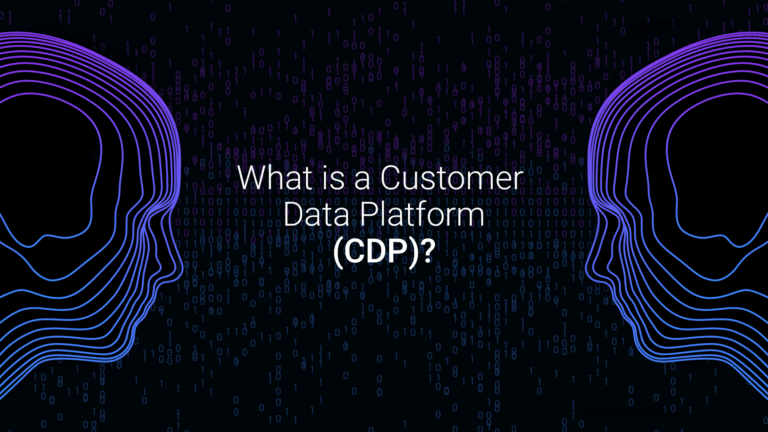The phase-out of third-party cookies on Chrome has been a hot topic, and Google have recently provided another update about the timeline of the phase-out, clarifying that they would delay the deprecation until 2025. While it may seem like a reprieve, allowing more time to collect third-party cookies in Chrome, we want to show you how you can spend the next months setting up a sustainable strategy based on customer trust, retention and personalization.
In this blog article, we dig deeper into the sunset of third-party cookies in Chrome and look at ways you can rethink marketing in a cookieless future.
The phase-out is happening for a reason
As online privacy has gained importance during the past decade, third-party cookies have increasingly come under scrutiny. It’s not surprising that their privacy concerns have led to action on Google’s part. Other browsers, notably Safari and Mozilla Firefox, already started blocking third-party cookies and cross-site tracking a few years ago, and now Chrome is following suit.
The use of cookies has become a lot more visible since the GDPR, as customers have to give explicit consent for websites to track their online behavior and process personal data. That also means users are more aware of the data they are sharing with companies. When companies don’t communicate their data collection policies transparently, concerns about privacy and lack of user control rise among consumers. In other words, if customers don’t trust your company to be careful with their data, they are far less likely to share their data with you.
If the pending deprecation of third-party cookies is making you worry about your marketing activities, we want to tell you that you’re not alone. At the end of 2022, 75% of marketers said that they rely heavily on third-party cookies. It’s safe to assume a lot of them still do, even to this day.
However, it’s clear that the time has come for companies to look at their marketing in a different way. Instead of focusing on the question, “How can I replace third-party cookies after the phase-out,” consider this approach instead: “How can I do a better analysis of the customer data I currently have and how can I start building engagement with consumers to convince them to move forward with me?”
Putting yourself in your customers’ shoes
Customers see your website differently than your employees and management do. It sounds logical, but companies often forget to put themselves in their customers’ shoes. So, let’s see how the customer journey can look through their eyes and let’s imagine the following scenario.
You are interested in buying a new washing machine and you’re browsing the internet to see what’s out there and get an idea of the different options. In the next few days, as you sit on the bus, do laundry and make dinner, you might look through different websites on your mobile phone, as it’s always nearby. Finally, you’ve found the model that has all required functions and fits within your budget. Your first reflex is to take your laptop and complete the purchase there.
Sounds relatable? Statistics and research back this up. In 2024, mobile traffic accounts for over 70% of visits on ecommerce websites. However, the conversion rate is 42% higher on desktop than on mobile, which sits at 4%. At the same time, the cart abandonment rate is 12% lower on desktop than mobile.
People switching devices is only one of the many challenges marketing teams struggle with when optimizing the customer journey and providing personalized experiences. So, how can your company take away these barriers and build customer engagement, which in turn allows you to collect good-quality, reliable data?
Our experience teaches us it’s all about trust and loyalty.
In a cookieless future, experience is everything
Evidence has shown time and time again that customers don’t mind sharing their data for personalization and retargeting if you provide them with the info they need. Let’s take the example of people switching devices. If your company relies on third-party cookies, you aren’t able to collect data efficiently when people use different devices, as third-party cookies can’t be used for cross-device or cross-browser behavior tracking. If you create an experience that motivates users to log in, on the other hand, people are more willing to do this. It’s all about consumers realizing the immediate benefit of logging into their account when you offer them a personalized experience in return. And that, once again, relates to customer trust.
How can you establish an exceptional customer experience and build a relationship with consumers that’s based on trust, not third-party cookies? The cornerstone of customer trust is transparency. Be clear to consumers about what data you are collecting, why you are collecting their data and how you will protect their data. The better consumers understand how their data will be used, the more likely your company is to collect valuable, relevant information about them. For instance, you can create a dedicated page with the most important points of your data policy in easy-to-understand and straightforward language, so that users don’t have to go through stuffy legal texts.
The more personas and audience slices you create, the more important it is to have relevant, rich and reliable customer data. Simply targeting as many people through advertising won’t work anymore. The future of digital commerce is personalized, adapted to each individual user. As your company crafts more experiences for your customers, you will eventually need a helping hand to manage these experiences. AI could provide the missing link there in the absence of third-party cookies. However, AI cannot and does not work miracles. The output is only as good as its input. That’s why it’s so important to collect and manage customer data with a clear plan in mind, and to have tools in place to manage and store this data.
Leveraging customer data in a way benefits consumers
The next step in building customer trust is showing customers that you are using the data you collect in a way that benefits them. Here are some ways you can leverage customer data:
Set up a loyalty program for returning customers
If loyal customers receive points or discounts for future purchases, they receive an immediate benefit for logging in to their account. Bonus points if the loyalty program is built around a user’s purchase history. Make it easy for them to log in: implement Single Sign-On (SSO) if data shows your users prefer this, for example.
Personalize the check-out flow
If you collect data on a customer’s preferred payment method, you can save them time by preselecting this method. It might seem like a small detail, but removing friction during the checkout process can significantly reduce cart abandonment and improve the customer experience.
Create outstanding customer service
Do you get frustrated when you have to write long messages to customer service, including your name, address, order number and many other details? You’re not the only one! If you show consumers you can save them time and effort when contacting customer service, whether it’s a human customer representative or a chatbot, they are more willing to share their data, as it benefits them directly.
How Vaimo can help
Google may have delayed the phase-out of third-party cookies in Chrome, but let there be no doubt that the future will be a cookieless one. Together, let’s make sure that the end of third-party cookies doesn’t mean the end of getting to know your customers. With a strategy built on trust and loyalty, you can offer a more personalized experience than before, and lay the foundations for a meaningful relationship with the people that are interested in your brand.
Vaimo supports businesses like yours by setting up data collection and personalization tools, such as a CDP (customer data platform) that suits your needs, both price-wise and feature-wise. Want to chat about the next steps in your journey to leveraging reliable, compliant first-party data? Our team is happy to talk you through the options.
Sources
Update on the plan for phase-out of third-party cookies on Chrome – privacysandbox.com
Third-party cookie deprecation – statistics & facts – statista.com
Explore eCommerce statistics and KPI benchmarks to see how you stack up – marketing.dynamicyield.com
The Cookieless Future: How to Prepare – osano.com
Google delays third-party ‘Cookiepocalypse’ until 2025 – techtarget.com
Why You Should Care About Checkout Abandonment & Personalisation – feropaymentscience.com







